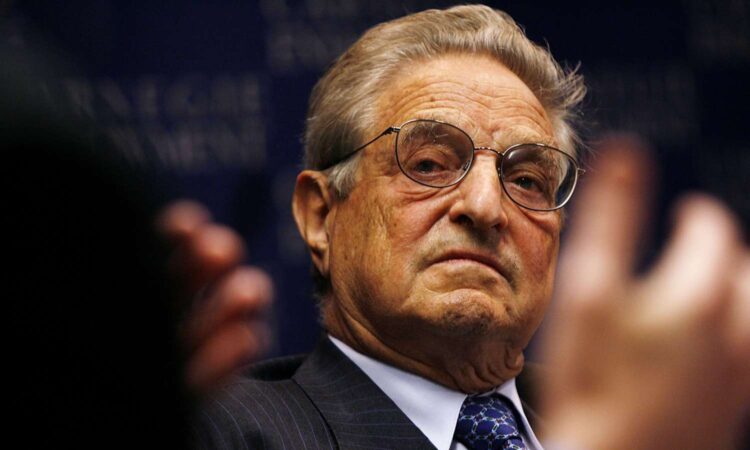
George Soros has made a number of impressive investments and trades over the years. He is one of the most famous investors in the financial community and is known for making massive currency bets on a global economic scale. It is believed he made up to $1 billion in a single day on a trade when he bet against the British pound.
Soros lived in Hungary during World War II, emigrated to England to study at the London School of Economics, and later moved to New York City. Eventually, he formed Soros Fund Management, which included the prominent hedge fund called Quantum Fund. By the time Soros converted his hedge fund into a family office in 2011, he had generated an average annualized return of about 20% over nearly 40 years. The following are three of his largest currency trades.
Key Takeaways
- George Soros is a famous hedge fund manager and generated years of exceptional returns running the Quantum Fund.
- One of the largest profits in the world of currency trading was a large bet made by George Soros against the British pound in 1991.
- The hedge fund manager also made large profits betting against the Thai baht in early 1997 before the Asian financial crisis.
- In the 2010s, Soros shorted the Japanese yen while betting on Japanese stocks for substantial profits.
Investopedia / Lara Antal
Bet Against the Pound
Soros’ bet against the British pound has been called one of the greatest currency trades of all time. Britain joined the European Exchange Rate Mechanism, or ERM, in 1990 during a period of high inflation and low interest rates. As part of that agreement, Britain vowed to keep the pound within a certain band in relation to the German mark and, in order to keep the two currencies within the range, it was forced to keep raising interest rates to attract buyers for its currency. Soros recognized the pound was overvalued versus the German mark and started to bet against the British currency.
It was during the summer of 1992 when Soros began building a short position in the British pound. According to his colleagues, he carried a $1.5 billion short position for most of the summer. The British government defended the pound by raising interest rates more and more. The government soon realized it would pay out massive amounts of money to defend the pound. German officials also made public statements that realignment within the ERM might be possible in mid-September.
In response to these comments by German officials, Soros decided to increase the size of his bet massively. He went from a $1.5 billion position to a massive $10 billion in the middle of September. He knew that the British government was having trouble keeping the currency propped up. Either the pound stayed relatively stable, in which case Soros and his investors would lose a little money, or the alternative was their bet would pay off. Thus, this was a low-risk, high-opportunity trade.
The British government was forced to abandon the ERM and begin allowing its currency to float freely on the evening of Sept. 16, 1992. The next day the pound fell 15% versus the German mark and 25% against the U.S. dollar. It is estimated Soros made around $1 billion on the trade.
Bet Against the Baht
Soros also allegedly made a massive bet against the Thai baht during the Asian financial crisis in 1997. It is estimated that he bet $1 billion of a $12 billion portfolio that the currency would implode, which eventually happened when the Bank of Thailand had run out of ammunition to support its currency and fend off short sellers.
The Malaysian Prime Minister later accused Soros of attacking Southeast Asian currencies, making a number of anti-Semitic comments against the hedge fund manager as well. Soros later clarified that he had sold those Asian currencies short early in 1997, months before the crisis. “By selling the Thai baht short in January 1997, the Quantum Fund managed by my investment company sent a market signal that the baht may be overvalued,” said Soros.
Bet Against the Yen
Soros made a large bet against the yen in 2013 and 2014. These bets once again netted Soros around $1 billion. Soros knew the Japanese Prime Minister Shinzo Abe was engaging in extensive monetary easing to jump-start Japan’s stagnant economy. These economic policies are known as Abenomics and had the effect of devaluing the yen.
At the same time, Soros was long the Nikkei, the Japanese stock market. The yen weakened around 17% during the time of Soros’ wager, while the Japanese stock market rallied around 28% before eventually selling off. In 2013, the Soros family investment fund managed over $24 billion and posted a roughly 24% return for the year.
What Are George Soros’ Top Holdings?
Soros’ top holdings, as of Nov. 2023, are Alphabet, Abcam, Novo Nordisk, Liberty Broadband, AerCap Holdings, CRH, and Amazon.com.
What Is Soros’ Investment Strategy?
Reflexivity is the cornerstone of Soros’ investment strategy. Soros doesn’t believe in market efficiency. He believes investors base their decisions on their perceptions of reality, rather than the actual truth, and attempts to profit from this.
Is George Soros a Forex Trader?
Some of Soros’ most succesful trades have been in the foreign exchange market. However, his investments aren’t just limited to currencies. He also invests in other asset classes.
The Bottom Line
George Soros is one of Wall Street’s most famous and successful investors. His Quantum Fund achieved an average annual return of 30% from 1970 to 2000. And his very lucrative bet against the British pound in the early 1990s remains among the most talked about investments of all time.
Deep pockets and following his instinct enabled Soros to make lots of money off currency trades. Other than the Bank of England, his other big victims include Thailand and Japan.



